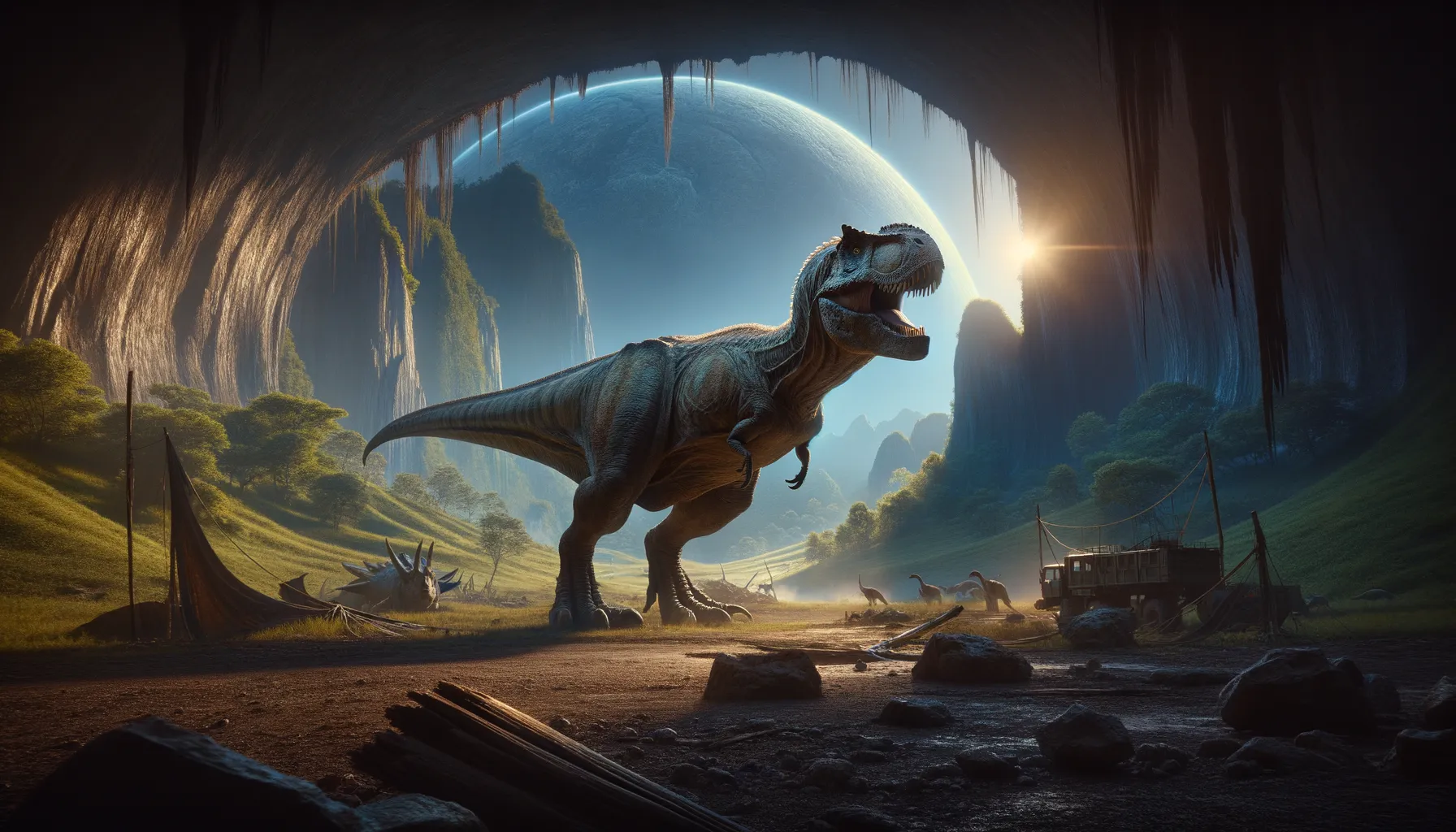
Xuanhanosaurus
Jurassic predator with heritage in China.
Period
Jurassic
Length
Around 4.5 meters from head to tail.
Height
Approximately 1.5 meters at the hips.
Weight
Estimated between 250 and 300 kilograms.
Xuanhanosaurus was a megalosaurid theropod dinosaur that roamed the landscapes of what is now China during the mid-Jurassic period. Known for its strong build and carnivorous habits, it is one of the early members of large predators that walked the Earth during its time. Fossils found suggest it had a robust frame that suited its predatory lifestyle.
Diet
Xuanhanosaurus was a carnivore, preying on smaller dinosaurs and possibly other smaller animals. Its teeth were adapted for a carnivorous diet, enabling it to tear into flesh efficiently.
Hunting
It likely hunted alone, using ambush tactics to surprise its prey. With strong limbs and sharp claws, it relied on quick bursts of speed to catch unsuspecting animals.
Environmental challenges
During the Jurassic period, Xuanhanosaurus faced a constantly changing environment with volcanic activity and shifting landscapes. Seasonal changes would have affected the availability of prey, pushing the dinosaur to adapt its hunting habits. Furthermore, competition with other predators would have been a constant challenge, requiring Xuanhanosaurus to be resourceful and strategic.
Speed
It had moderate speed, likely suitable for short sprints.
Lifespan
Estimated to be several decades like many theropods.
First discovery
Discovered in 1984 by Dong Zhiming in Sichuan, China.
Fun Facts
- Xuanhanosaurus was a theropod dinosaur that lived during the Middle Jurassic period.
- It was discovered in the Sichuan Province of China in the 1980s.
- Xuanhanosaurus is believed to have been about 20 feet long, making it a medium-sized dinosaur.
- Unlike some of its relatives, it may have had relatively short arms compared to its body size.
- Fossil evidence suggests that Xuanhanosaurus might have been a carnivore, hunting other animals for food.
- The name 'Xuanhanosaurus' means 'Xuanhan lizard,' named after the location where its fossils were found.
- Xuanhanosaurus is an important discovery because it helps scientists understand the evolution of early theropods in Asia.
Growth and Development
Xuanhanosaurus, like many theropods, would have hatched from eggs and grown rapidly to escape predation. Juveniles were smaller and more vulnerable, likely staying in safer environments until they gained enough size and strength. Growth rates would have been influenced by environmental conditions and food availability, affecting survival strategies.
Habitat
Xuanhanosaurus lived in a habitat that included forests and open plains, providing various opportunities for hunting. The region's climate would have been warm and humid, encouraging diverse plant and animal life. Water sources such as rivers and lakes were essential for survival, affecting the dinosaur's distribution.
Interaction with other species
Xuanhanosaurus shared its environment with other dinosaur species, both herbivorous and carnivorous. Competition for food and territory would have been significant, leading to occasional conflicts. Some species might have formed symbiotic relationships, indirectly benefiting from each other's presence.
Natural lifespan
Xuanhanosaurus could potentially live for 25 to 30 years in the wild.
Reproduction
Xuanhanosaurus, like many theropods, laid eggs, with nests possibly built in safe locations. The number of eggs per clutch remains speculative, but they likely provided some form of parental care to increase hatchling survival.
Social behaviour
Evidence on social behavior is limited, but Xuanhanosaurus might have been mostly solitary, as inferred from its theropod relatives. Occasional gatherings could occur at feeding sites, though likely with competitive interactions.
Fossil locations
Fossils of Xuanhanosaurus have been primarily found in the Sichuan Province of China, specifically in the Xiashaximiao Formation. These discoveries provide valuable insights into mid-Jurassic theropod diversity in Asia. They have helped paleontologists understand the distribution of early theropod species across different continents.
